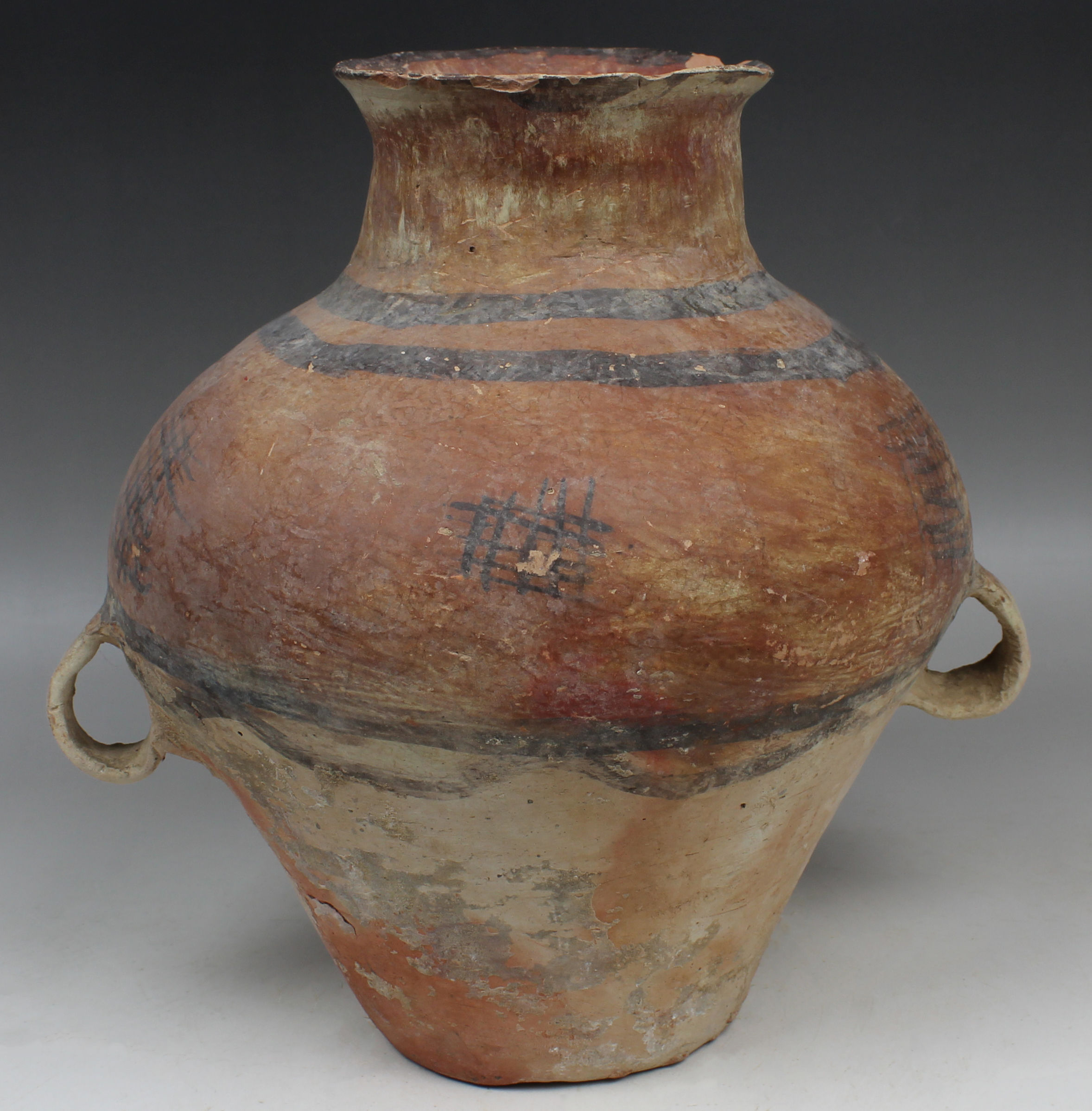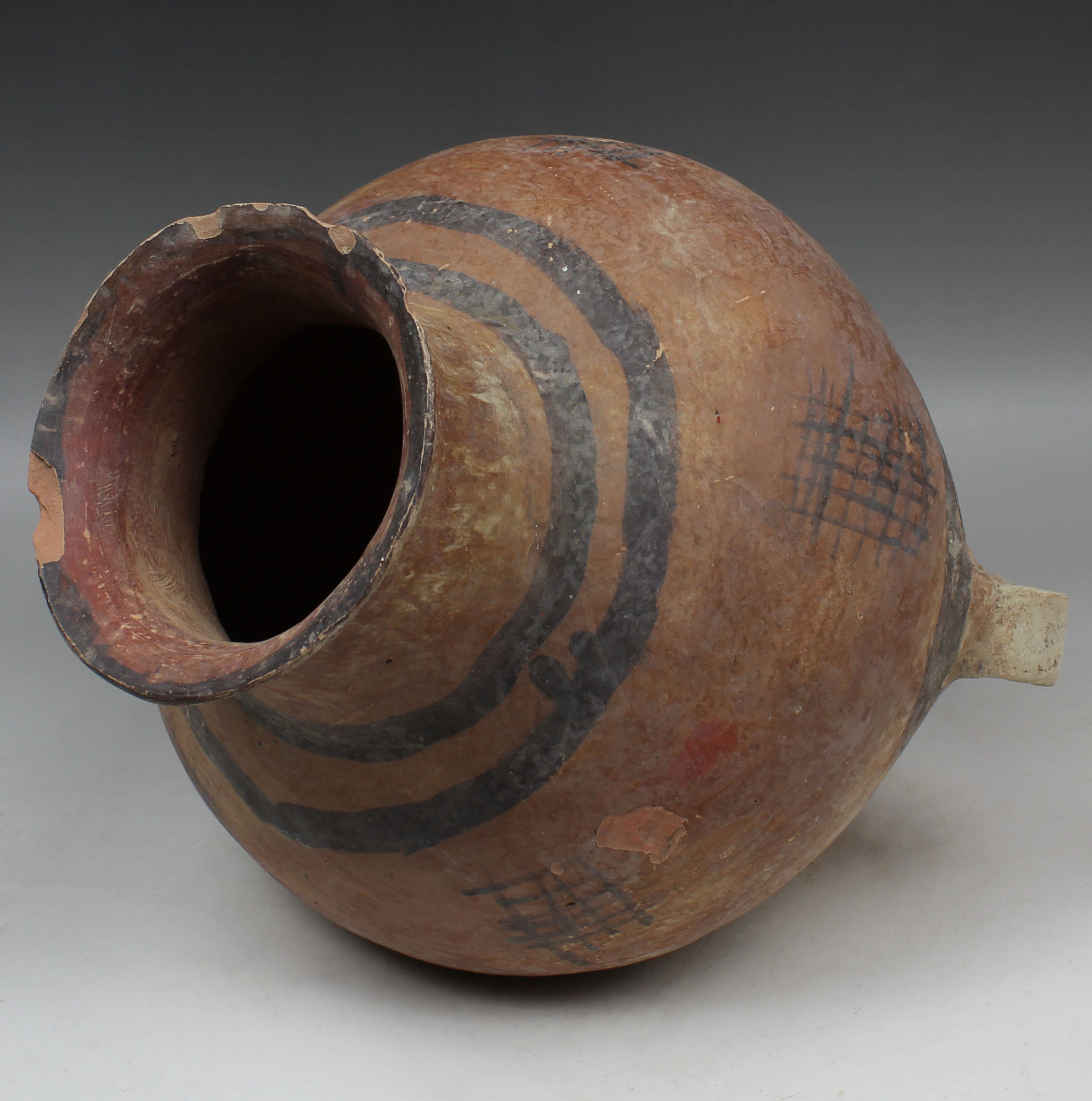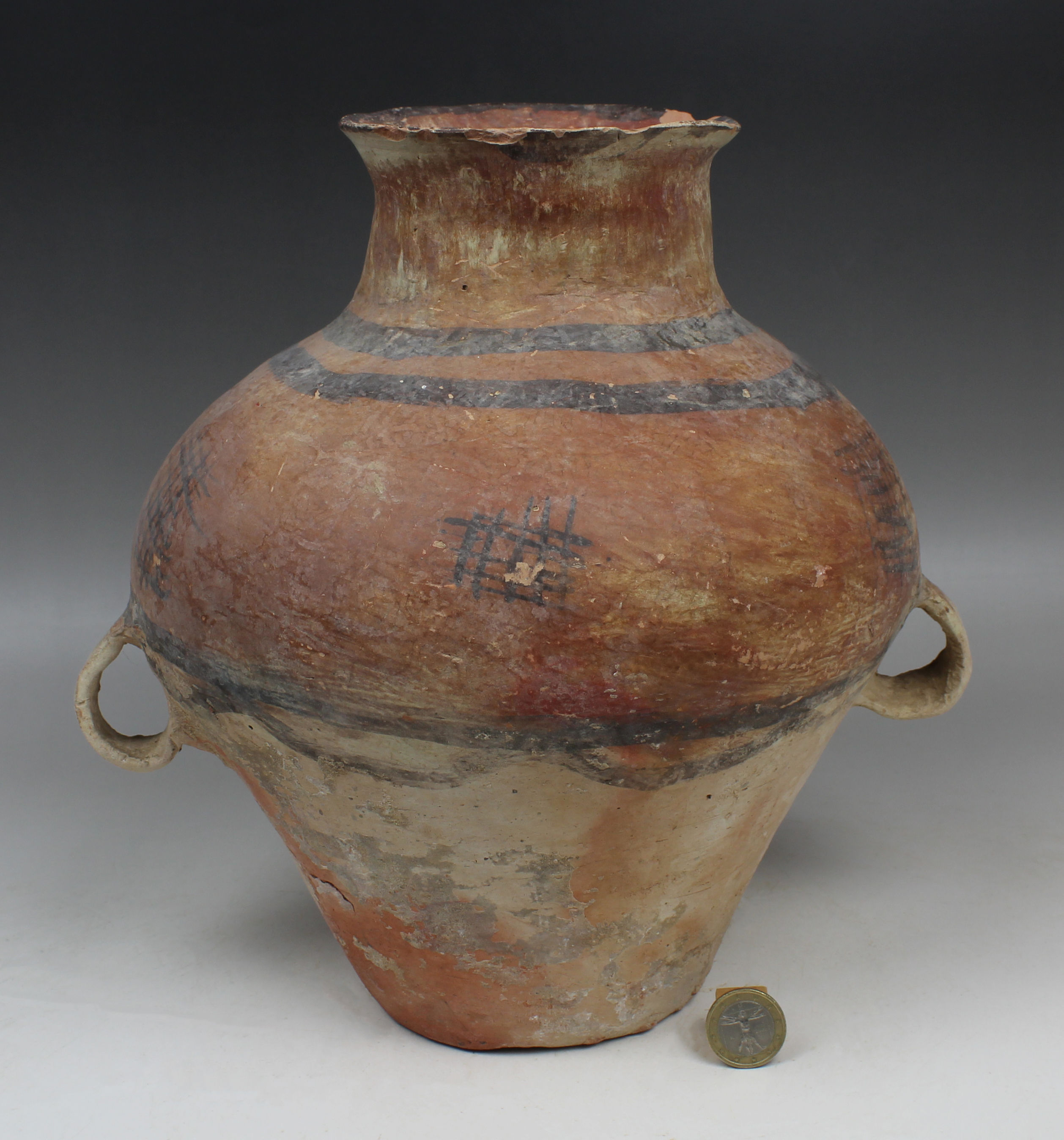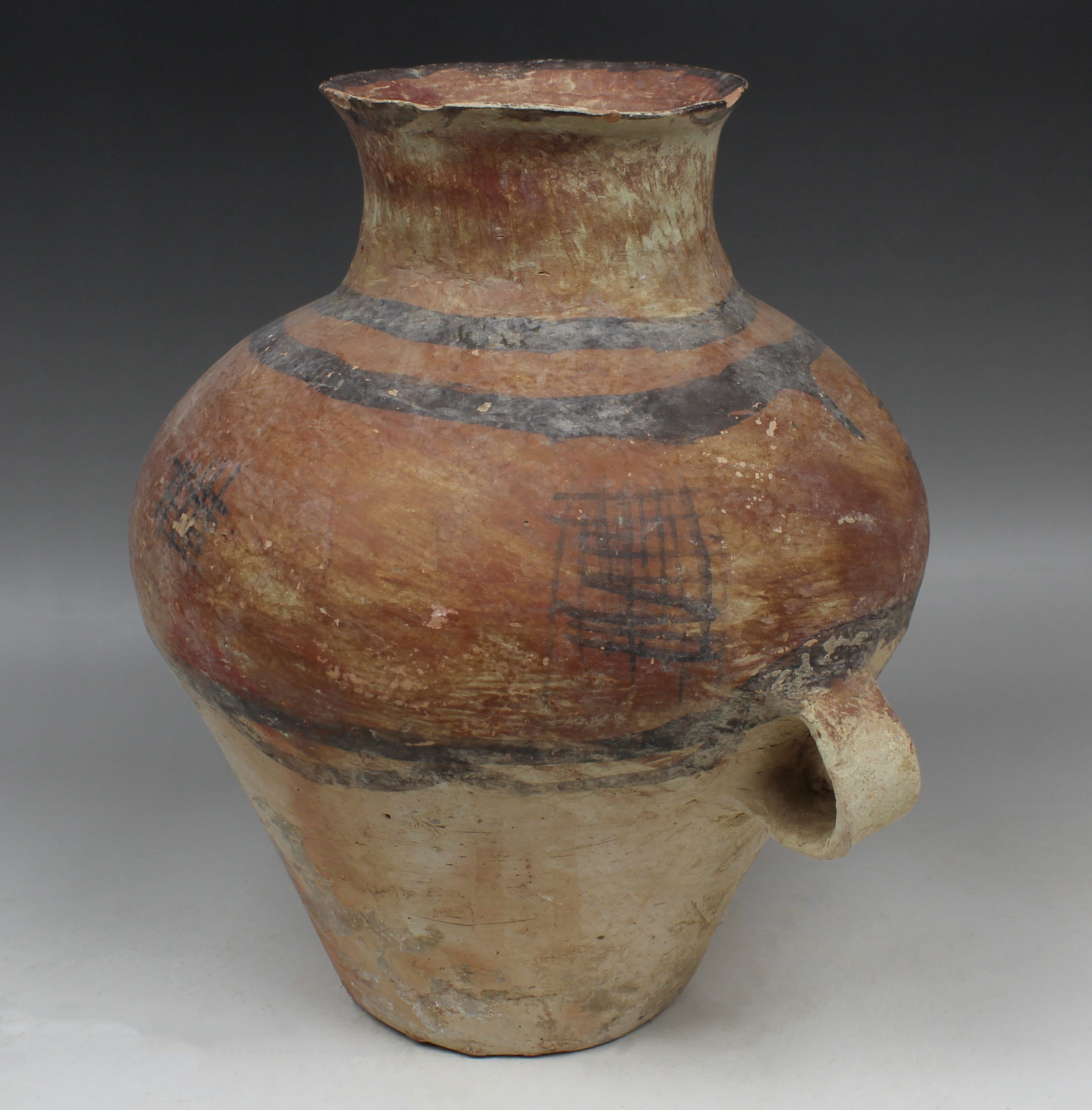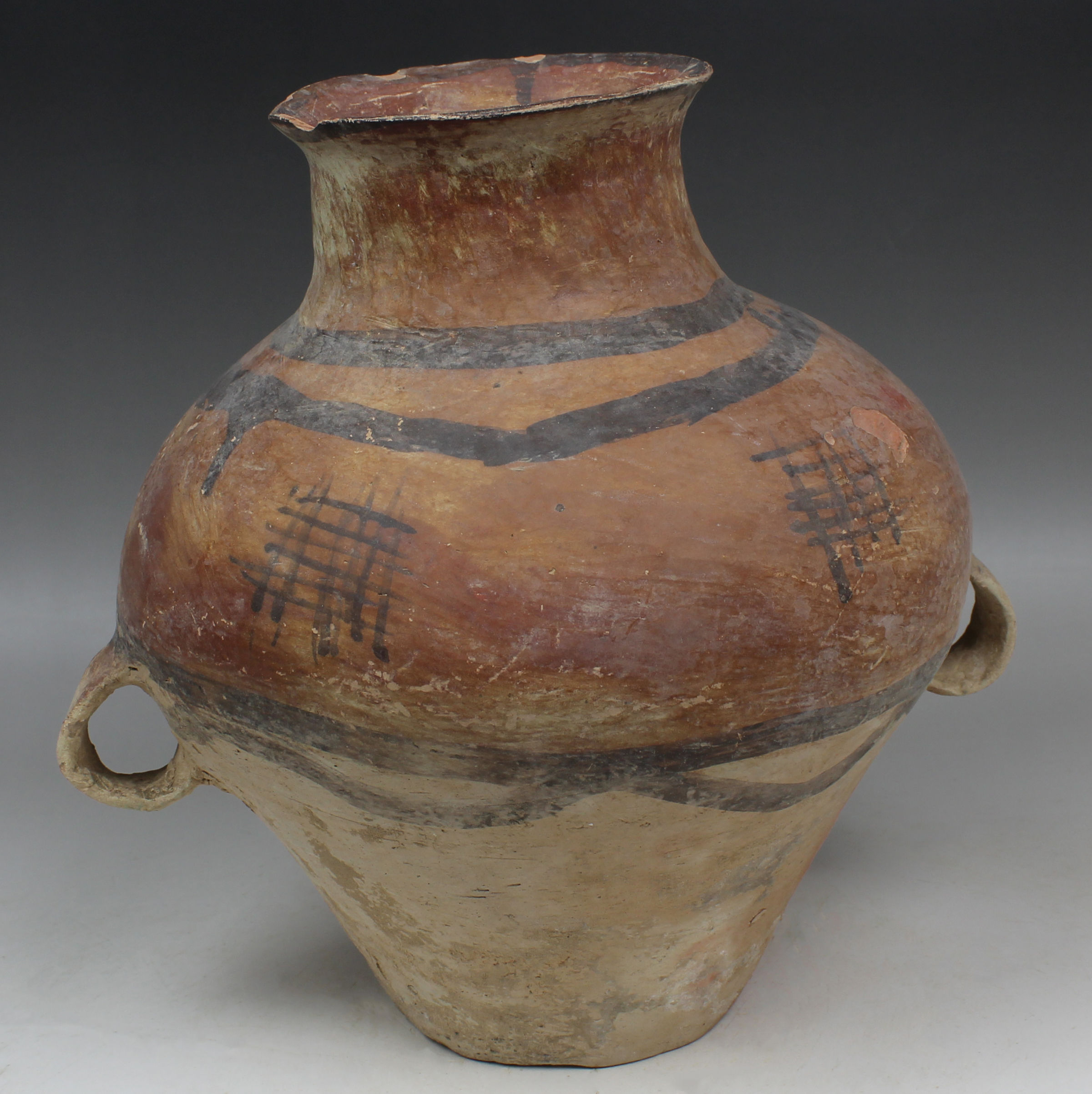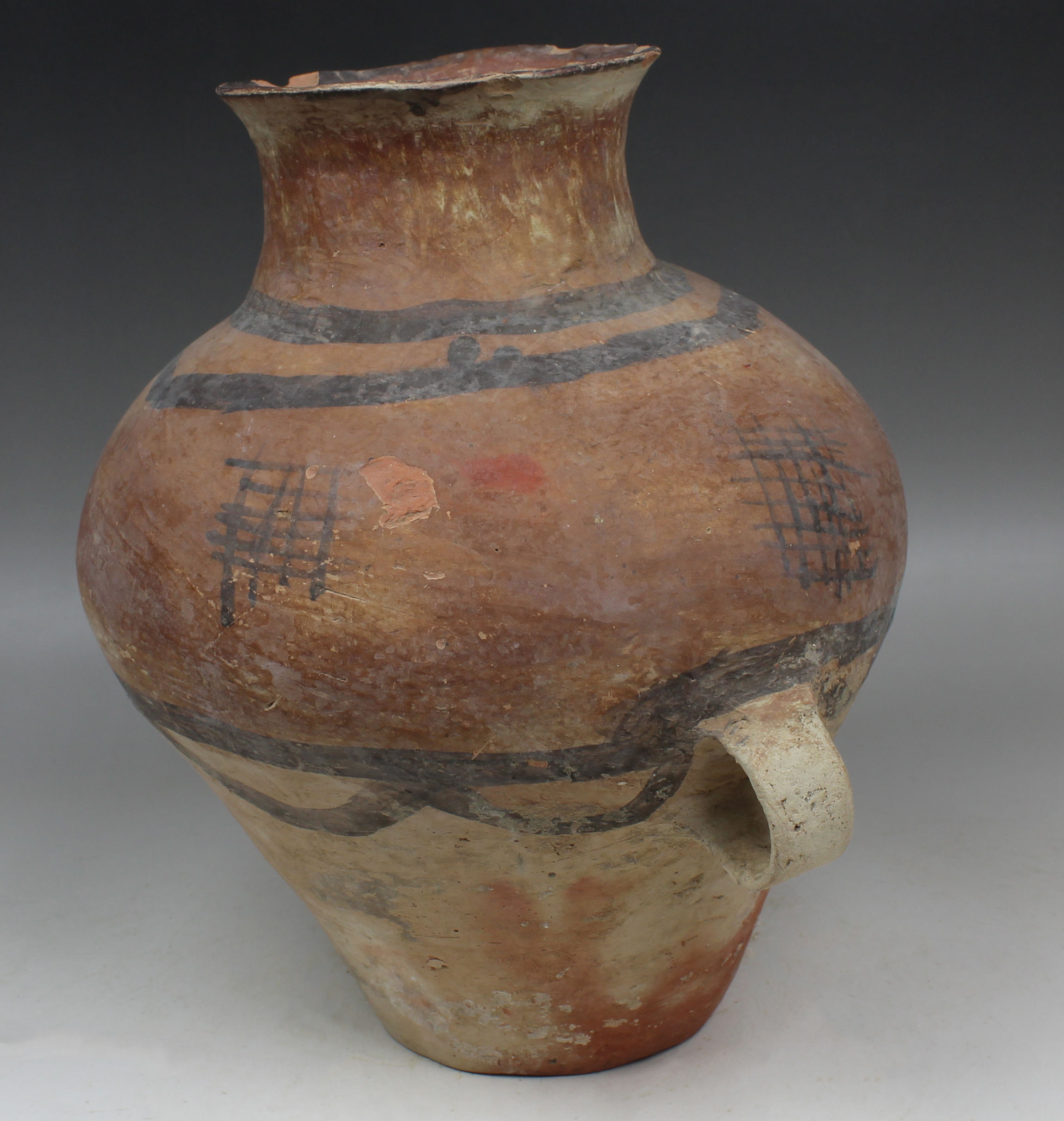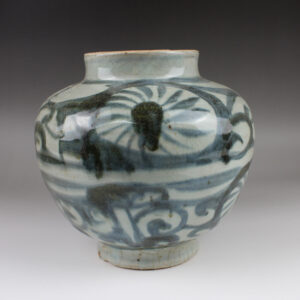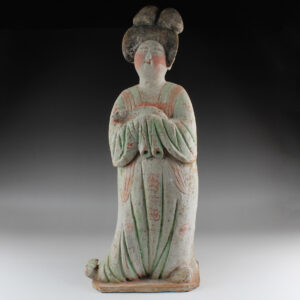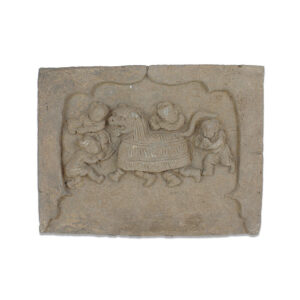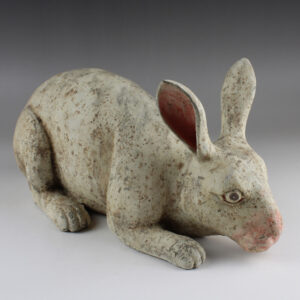Description
| ITEM | Decorated amphora |
| MATERIAL | Pottery |
| CULTURE | Chinese, Neolithic |
| PERIOD | 3rd millenium B.C |
| DIMENSIONS | 265 mm x 260 mm |
| CONDITION | Good condition |
| PROVENANCE | Ex English private collection, North Yorkshire, acquired before 1990s |
| BIBLIOGRAPHY | The Metropolitan Museum, New York, accession number 2015.500.7.9 |
Chinese Neolithic pottery represents some of the earliest examples of ceramic production in human history. This period, spanning roughly from 10,000 BC to 2000 BC, witnessed the transition of human societies from hunter-gatherer lifestyles to settled agricultural communities. Pottery played a crucial role in this transition, serving not only as containers for food and water but also as vessels for rituals, ceremonies, and cultural expression. Neolithic pottery in China is characterized by its diverse forms, intricate decorations, and regional variations, reflecting the rich cultural tapestry of ancient Chinese societies.
One of the most iconic types of Chinese Neolithic pottery is the painted pottery of the Yangshao culture, dating back to around 5000 BC. This pottery is notable for its vibrant colors, intricate designs, and depictions of animals, humans, and geometric patterns. These paintings are believed to have had symbolic and religious significance, offering insights into the spiritual beliefs and cultural practices of Neolithic communities. Additionally, the craftsmanship of Yangshao pottery demonstrates advancements in ceramic technology, such as the use of wheel-thrown pottery and kiln firing, which laid the foundation for future developments in Chinese ceramic art.
nother significant Neolithic pottery tradition in China is associated with the Longshan culture, which emerged around 3000 BC. Longshan pottery is characterized by its distinctive black color, thin walls, and elegant shapes, reflecting a high level of technical skill and aesthetic refinement. Unlike the painted pottery of the Yangshao culture, Longshan pottery tends to be more understated in its decoration, often featuring simple incised or impressed designs. This minimalist approach to pottery reflects a shift towards more utilitarian purposes, as Longshan


